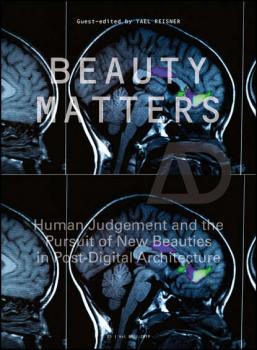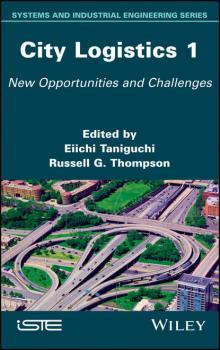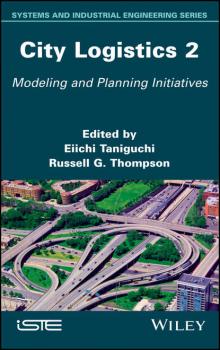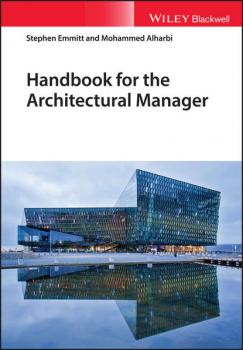ТОП просматриваемых книг сайта:
Архитектура
Различные книги в жанре Архитектура, доступные для чтения и скачиванияАннотация
Beauty in architecture matters again. This issue of AD posits that after 80 years of aggressive suppression of engagement with aesthetics, the temporarily dormant preoccupation with beauty is back. This is evidenced by a current cultural shift from the supposedly objective to an emerging trust in the subjective – a renewed fascination for aesthetics supported by new knowledge emanating simultaneously from disparate disciplines. Digital design continues to influence architectural discourse, not only due to changes in manufacturing but also through establishing meaning. The very term 'post-digital' was introduced by computational designers and artists, who accept that digital gains in architectural design are augmented by human judgement and cognitive intuition. The issue takes an interdisciplinary approach to this re-emerging interest in beauty across neuroscience, neuroaesthetics, mathematics, philosophy and architecture, while discussing the work of the international architects, in both practice and academe, who are generating new aesthetics. Contributors: Alisa Andrasek,Izaskun Chinchilla, Marjan Colletti, Peter Cook, Robbert Dijkgraaf, Winka Dubbeldam, David Garcia, Graham Harman, Claudia Pasquero and Marco Poletto, Alan Powers, Gilles Retsin, Kristina Schinegger and Stefan Rutzinger, Fleur Watson and Martyn Hook and Semir Zeki. Featured architects: Archi-Tectonics, ecoLogicStudio, NaJa & deOstos, Kazuyo Sejima + Ryue Nishizawa/SANAA, soma architecture, Studio Gang, John Wardle Architects and Tom Wiscombe Architecture.
Аннотация
A tactical guide to successful Virtual Design and Construction project coordination, featuring case studies from leading VDC firms. Virtual Design Coordination (VDC) employs information-rich Building Information Modeling (BIM) to enable specialty designers and contractors to create a single, coordinated set of designs that can prevent cost overruns, avoid schedule delays, and identify issues in the field. Although BIM-based design coordination is widely used in the commercial construction industry, there remains a need for a standardized practice. BIM for Design Coordination formalizes industry best practices and provides structured guidelines to the process. Helping readers gain the benefits of BIM-based design coordination, this practical guide covers areas such as setting up a project for success, model quality impacts on design coordination, carrying out a successful VDC session, and more. Specific guidelines for various project stakeholders are laid out in detail, while real-world examples of project design coordination workflows and templates for BIM Project Execution Plans (PxPs) are provided throughout the text. Written by a leading expert and educator in the field, this book: Provides a formal set of BIM-based design coordination guidelines that emphasize construction-stage coordination Features real-life case studies that illustrate how leading firms approach design coordination Covers BIM-based design coordination in other industries, such as infrastructure and industrial sectors Presents guidelines for all project stakeholders, including subcontractors, architects, engineers, fabricators, and owners Includes chapters on teaching BIM-based design coordination and the future of the field BIM for Design Coordination: A Virtual Design and Construction Guide for Designers, General Contractors, and MEP Subcontractors is a much-needed resource for general contractors and members of VDC teams, as well as academics, students, and professionals new to BIM-based design coordination.
Аннотация
This volume of three books presents recent advances in modelling, planning and evaluating city logistics for sustainable and liveable cities based on the application of ICT (Information and Communication Technology) and ITS (Intelligent Transport Systems). It highlights modelling the behaviour of stakeholders who are involved in city logistics as well as planning and managing policy measures of city logistics including cooperative freight transport systems in public-private partnerships. Case studies of implementing and evaluating city logistics measures in terms of economic, social and environmental benefits from major cities around the world are also given.
Аннотация
This volume of three books presents recent advances in modelling, planning and evaluating city logistics for sustainable and liveable cities based on the application of ICT (Information and Communication Technology) and ITS (Intelligent Transport Systems). It highlights modelling the behaviour of stakeholders who are involved in city logistics as well as planning and managing policy measures of city logistics including cooperative freight transport systems in public-private partnerships. Case studies of implementing and evaluating city logistics measures in terms of economic, social and environmental benefits from major cities around the world are also given.
Аннотация
Urban logistics has been a subject of interest to researchers and practitioners for more than 20 years in France and Europe, and more than 40 in the United States. Nevertheless, the subject remains difficult to address by a lack of unification in the definitions and proposed methods but also by what makes its great richness: the diversity of actors and the pluridisciplinarity of the methods and techniques available. This book, which synthesizes more than 10 years of personal research on the subject, but also experience within different teams and projects, intends to bring a unified vision (and more and more followed at the international level) on logistics planning Urban development. It begins with an overview of research in urban logistics and then describes and defines the main components: flows, actors, infrastructures, management components, technologies, regulations and financing actions. A unified vision of these elements as well as the definition of sustainable urban logistics is proposed. Then, the book presents the basics of planning and managing sustainable urban logistics. First, the basics of the before-after analysis are introduced, not only for the experiments but also for the simulation of scenarios. To carry out this type of analysis, two main groups of methods are needed: methods for estimating flows and methods for calculating evaluation indicators. The book presents the main global standards and dominant models for the estimation of the urban freight transport demand, i.e. of freight transport needs in urban areas. Then it presents the methods for estimating and simulating transport and distribution schemes (i.e. transport supply) as well as a proposal for integrated supply-demand modeling. All these methods are presented for immediate application to practitioners, accompanied by summary tables and parameters necessary for their implementation. As far as evaluation is concerned, the book presents a framework for the choice of sustainable indicators and scorecards. Second, the main methods for economic, environmental, social and accessibility assessment are presented. They are accompanied by tables and figures necessary for their implementation. Finally, the main applications of the proposed methods are introduced. The book is meant to be a practical guide to applying the main methods from scientific research to a practical context, and presents examples of quantified and explained application. It is thus the first book that summarizes and presents the main unified methods to help the different decision-makers to implement them in their actions of planning and management of the urban logistics and the transport of goods in town.
Аннотация
This volume of three books presents recent advances in modelling, planning and evaluating city logistics for sustainable and liveable cities based on the application of ICT (Information and Communication Technology) and ITS (Intelligent Transport Systems). It highlights modelling the behaviour of stakeholders who are involved in city logistics as well as planning and managing policy measures of city logistics including cooperative freight transport systems in public-private partnerships. Case studies of implementing and evaluating city logistics measures in terms of economic, social and environmental benefits from major cities around the world are also given.
Аннотация
Architects are facing a crisis of agency. For decades, they have seen their traditional role diminish in scope as more and more of their responsibilities have been taken over by other disciplines within the building construction industry. Once upon a time, we might have seen the architect as the conductor of the orchestra; now he or she is but one cog in a vast and increasingly complex machine. In an attempt to find a way out of this crisis, there is growing debate about how architects might reassert the importance of their role and influence. On one side of this argument are those who believe that architects must refocus their attention on the internal demands of the discipline. On the other are those who argue that architects must, instead, reacquaint themselves with what many still believe to be the discipline’s core mission of advancing social progress and promoting the public good, and at the same time the scope of their traditional disciplinary remit. At root, this question is fundamentally about freedom, about whether architects still possess it – if they have ever done – and whether it is possible to find the professional, disciplinary and individual autonomy to be able to define the spheres of their own practice. Presenting a variety of views and perspectives, this issue of AD takes us to the heart of what freedom means for architecture as it adapts and evolves in response to the changing contexts in which it is practised in the 21st century. Contributors include: Phillip Bernstein, Peggy Deamer, Adam Nathaniel Furman, Kate Goodwin, Charles Holland, Anna Minton, Patrik Schumacher, Alex Scott-Whitby, Ines Weizman, and Sarah Wigglesworth. Featured architects: Atelier Kite, ScottWhitbyStudio, C+S Architects, Anupama Kundoo, Noero Architects, Umbrellium, and Zaha Hadid Architects. Architects are facing a crisis of agency. For decades, they have seen their traditional role diminish in scope as more and more of their responsibilities have been taken over by other disciplines within the building construction industry. Once upon a time, we might have seen the architect as the conductor of the orchestra; now he or she is but one cog in a vast and increasingly complex machine. In an attempt to find a way out of this crisis, there is growing debate about how architects might reassert the importance of their role and influence. On one side of this argument are those who believe that architects must refocus their attention on the internal demands of the discipline. On the other are those who argue that architects must, instead, reacquaint themselves with what many still believe to be the discipline’s core mission of advancing social progress and promoting the public good, and at the same time the scope of their traditional disciplinary remit. At root, this question is fundamentally about freedom, about whether architects still possess it – if they have ever done – and whether it is possible to find the professional, disciplinary and individual autonomy to be able to define the spheres of their own practice. Presenting a variety of views and perspectives, this issue of AD takes us to the heart of what freedom means for architecture as it adapts and evolves in response to the changing contexts in which it is
Аннотация
This book can be first considered as a complete synthesis of the EcCoGen ANR project (2011-2012), involving researchers from different French labs (including MAP) and domains, breaking major difficulties of the real-time generative design in the early stages of a pre-architectural project. Then the scope becomes larger, and the authors introduce major prospects following recent advances on natural and artificial evolution.
Аннотация
The essential resource for becoming more effective in the highly competitive architectural marketplace Handbook for the Architectural Manager offers architects a comprehensive resource that brings together critical information on four interlinked areas: managing the architectural office, projects, stakeholders, and learning. Unlike other books on the topic that only stress management of the business or the management of projects, this book offers a guiding framework that encompasses the architectural manager's role in developing the practice’s competitive strategies and overseeing the project portfolio. Written by noted experts in the field, Handbook for the Architectural Manager is grounded in current research in which, for the first time, the components of architectural management have been analyzed systematically, tested, and developed for practical application. Designed to explore typical architectural management issues, the book provides clear and concise direction with practical step-by-step guidance as well as helpful checklists, templates and scenarios, and case studies to illustrate best practice. This essential resource: Offers a groundbreaking handbook that contains a comprehensive management framework for architectural practice Contains new insights and guidance based on solid research on managing the architectural practice Brings together in one book the best management techniques of the office, projects, stakeholders, and learning Includes a well-grounded critical review of the existing literature on the topic Designed for professionals in the field but written in accessible language suitable for students Handbook for the Architectural Manager offers a practical guide for overseeing the development of architectural designs and associated activities and ensuring all work is consistent (i.e. adheres to current standards, legislation, client specifications, and office protocols) and completed on time as well as information on staff development and learning.
Аннотация
Brazil is a country of city dwellers undergoing radical transformation: over 85 per cent of the country’s citizens live in cities and over 40 per cent of the population live in metropolises of more than a million people. Whereas previously urban growth had been ad hoc, preparation for the FIFA World Cup in 12 cities across the country in 2014, and for the upcoming Olympic and Paralympic Games in Rio, changed all that. Several Brazilian cities have proactively invested in infrastructure and the public realm. And a number of projects by international ‘starchitects’ have heightened interest in Brazil from architects and urban practitioners abroad. The failure of public authorities to meet their ambitious aspirations for the sporting mega-events sparked a series of street protests across the country under the banner of ‘the right to the city’, beginning in 2013. For Brazil, this was an entirely new phenomenon, one which has unveiled the potential for bottom-up influences to effect urban change. The focus of this issue, though, is on design projects that contribute a strong sense of place to their respective cities, highlighting also the integration of landscape design in urban planning and community interventions that seek to address the enormous disparity between the lives of the country’s rich and poor. Contributors: Ricky Burdett, Thomas Deckker, Gabriel Duarte, Sergio Ekerman, Nanda Eskes and André Vieira, Alexandre Hepner and Silvio Soares Macedo, Circe Monteiro and Luiz Carvalho, Joana Carla Soares Gonçalves, Jaime Lerner, Ana Luiza Nobre, Justin McGuirk, Francesco Perrotta-Bosch, Maria do Rocio Rosário, Fernando Serapião, Guilherme Wisnik Featured architects: AECOM, Biselli Katchborian, Brasil Arquitetura, Santiago Calatrava, Studio Arthur Casas, Diller Scofdio + Renfro, Herzog & de Meuron, Vigliecca & Associados










